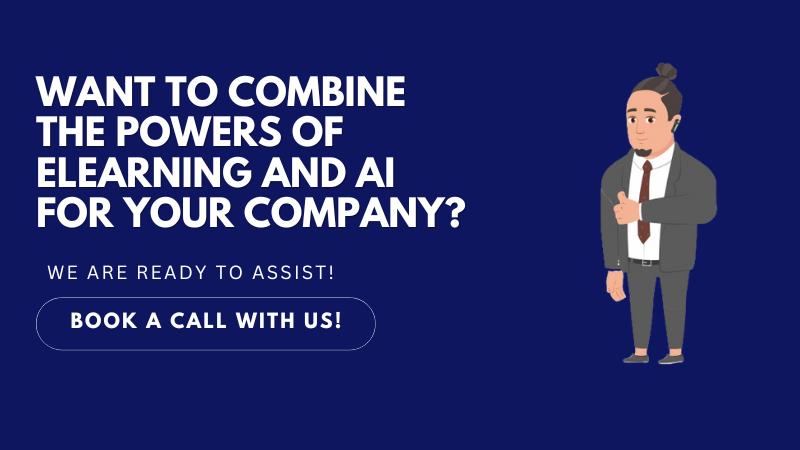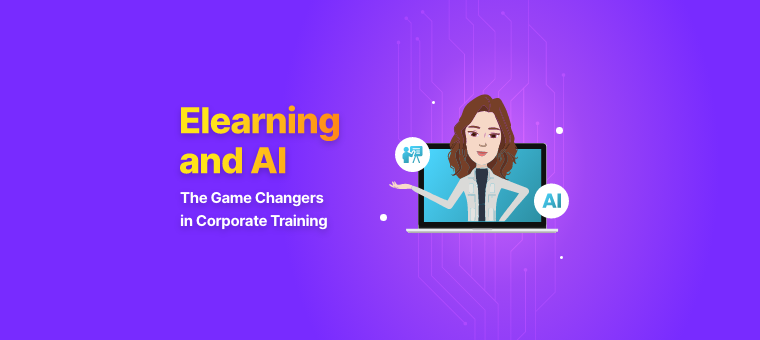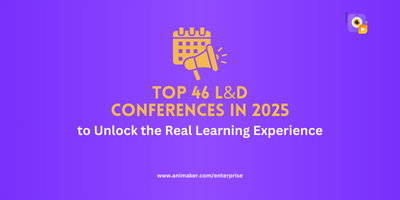How eLearning and AI Are Defining a New Era of Learning?
Think about it - corporate training has come a long way, right? No more boring, one-size-fits-all sessions that felt more like a burden than an opportunity to learn.
With eLearning, training has become flexible, accessible, and available to learners no matter where they are in the world.
And it’s more than just convenience. Thanks to digital transformation, companies can now deliver training on a large scale, providing continuous learning that keeps up with the fast pace of today's work environment.
But here’s the thing. As our need for more personalized and engaging learning experiences grows, traditional eLearning is starting to show its limits.
They’ve been great, but can they keep up with the demand for something more engaging?
That’s where AI steps in to help, ready to take eLearning to the next level.
To meet these constantly evolving expectations, eLearning and AI combine to change how learning content is created, delivered, and experienced.
It is no wonder that leading companies are embracing AI to make their training more effective and drive exceptional results.

In this article, we will explore how eLearning and AI go hand-in-hand -
- The Role of AI in eLearning
- Real-life Examples of AI in eLearning
- Benefits of AI in eLearning
- Challenges of AI in eLearning
Let’s get started!
The Role of AI in eLearning
AI is playing a crucial role in transforming eLearning, with its wide range of capabilities that enhance both the creation and delivery of content. Some of the most impactful roles of AI in eLearning include:
1. Content Creation and Curation
One of the most powerful applications of AI in eLearning is its ability to create and curate content.
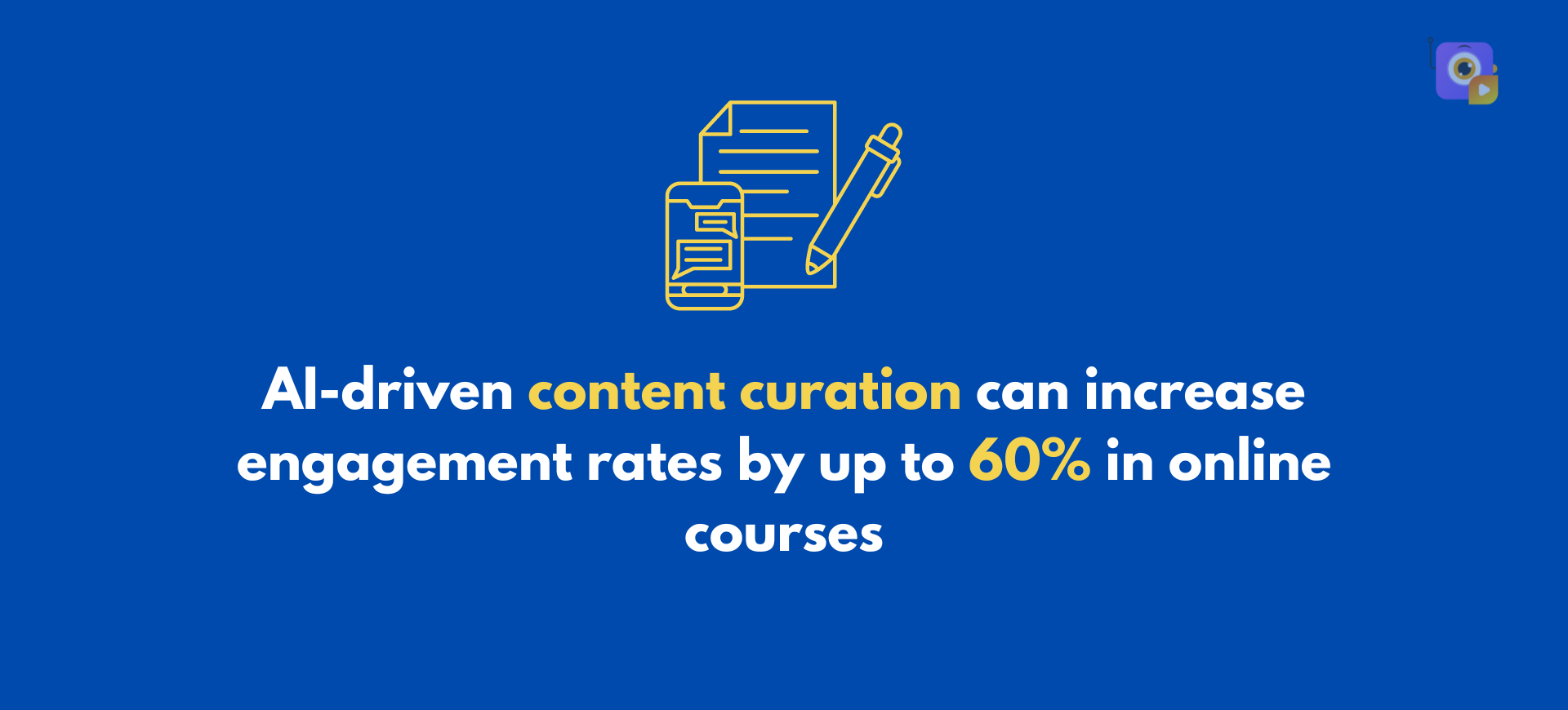
AI not only excels at organizing the structure of eLearning materials but also generates new content from scratch, including lessons and quizzes.
Beyond text-based content, AI-powered tools can produce high-quality videos, turning complex ideas into engaging and easily understandable visual formats.
Such AI tools help instructional designers quickly create customized content that aligns with specific learning objectives, saving time and resources.
2. Behavioral Analytics and Learning Insights
AI can help provide deep insights into learner behaviors by analyzing how they interact with the content.

This includes tracking time spent on different sections, identifying frequently revisited topics, and understanding engagement patterns, which helps educators improve their course content if needed.
3. Personalized Learning Experiences
From the insights that we get, AI can then be used to create personalized learning that caters to individual learning styles.

This can involve adjusting the modules, modifying the difficulty level, or recommending specific resources that align with each learner's profile.
Such adaptive learning ensures that learners stay engaged and progress at their own pace, ultimately enhancing retention and comprehension.
4. Improved Accessibility and Inclusivity
AI tools can improve accessibility by providing transcription, translation, and text-to-speech features.
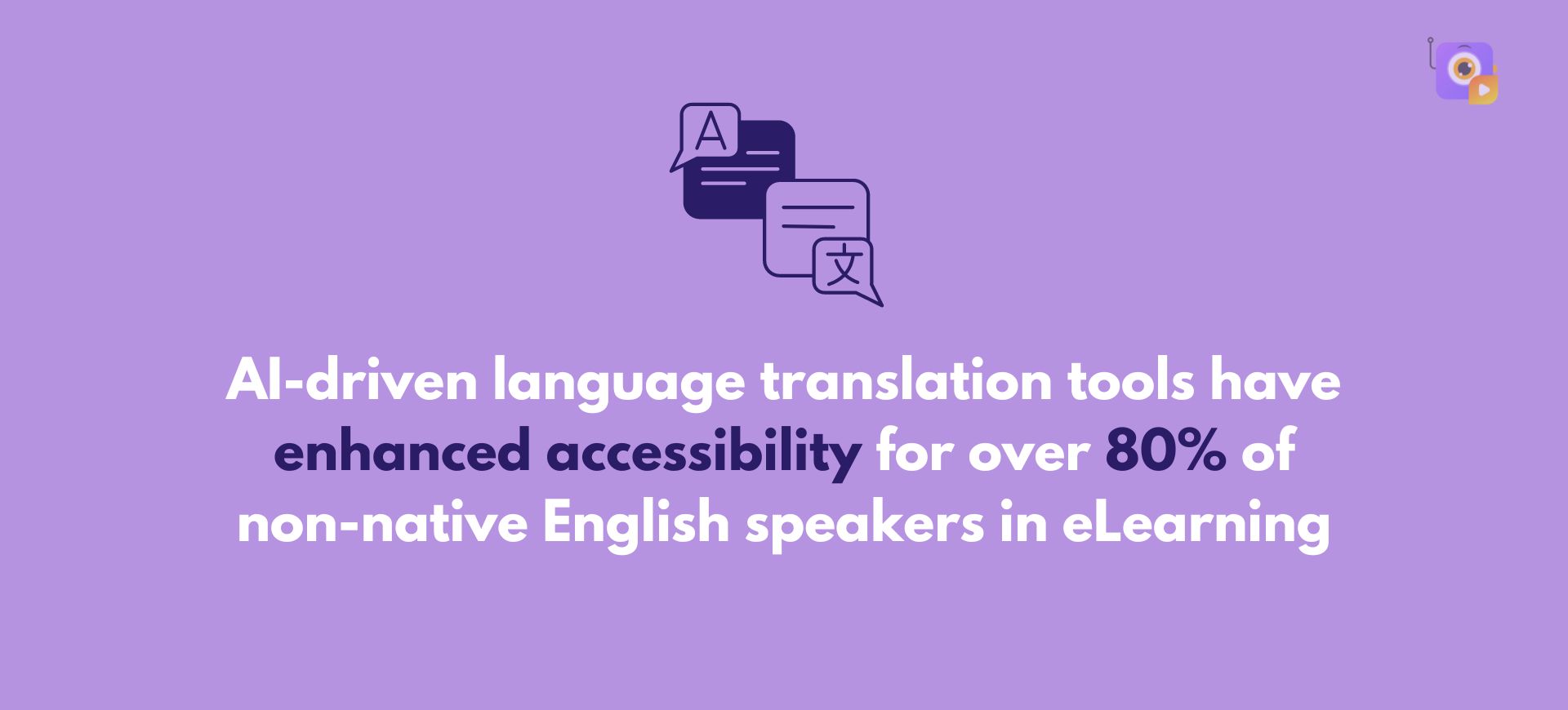
This makes eLearning content accessible to a global audience, including non-native speakers and those with disabilities, ensuring that learning opportunities are inclusive and available to all.
When it comes to generating subtitles, Animaker Subtitles does the job best. It uses AI to analyze the video and generates accurate and perfectly synced subtitles in just a minute!
Moreover, you can translate the generated subtitles into 130+ languages!

For AI voiceovers/text-to-speech needs, Animaker Voice has got you covered. With 2000+ AI voices and 200+ languages, creating inclusive eLearning content has never been easier.

With these advanced tools at your fingertips, there is every opportunity to create effective and engaging eLearning videos.
5. Virtual Tutors and AI Chatbots
AI can also take the form of virtual tutors or chatbots like ChatGPT and Gemini that provide on-demand assistance, answer learner questions, and guide them through the learning process.
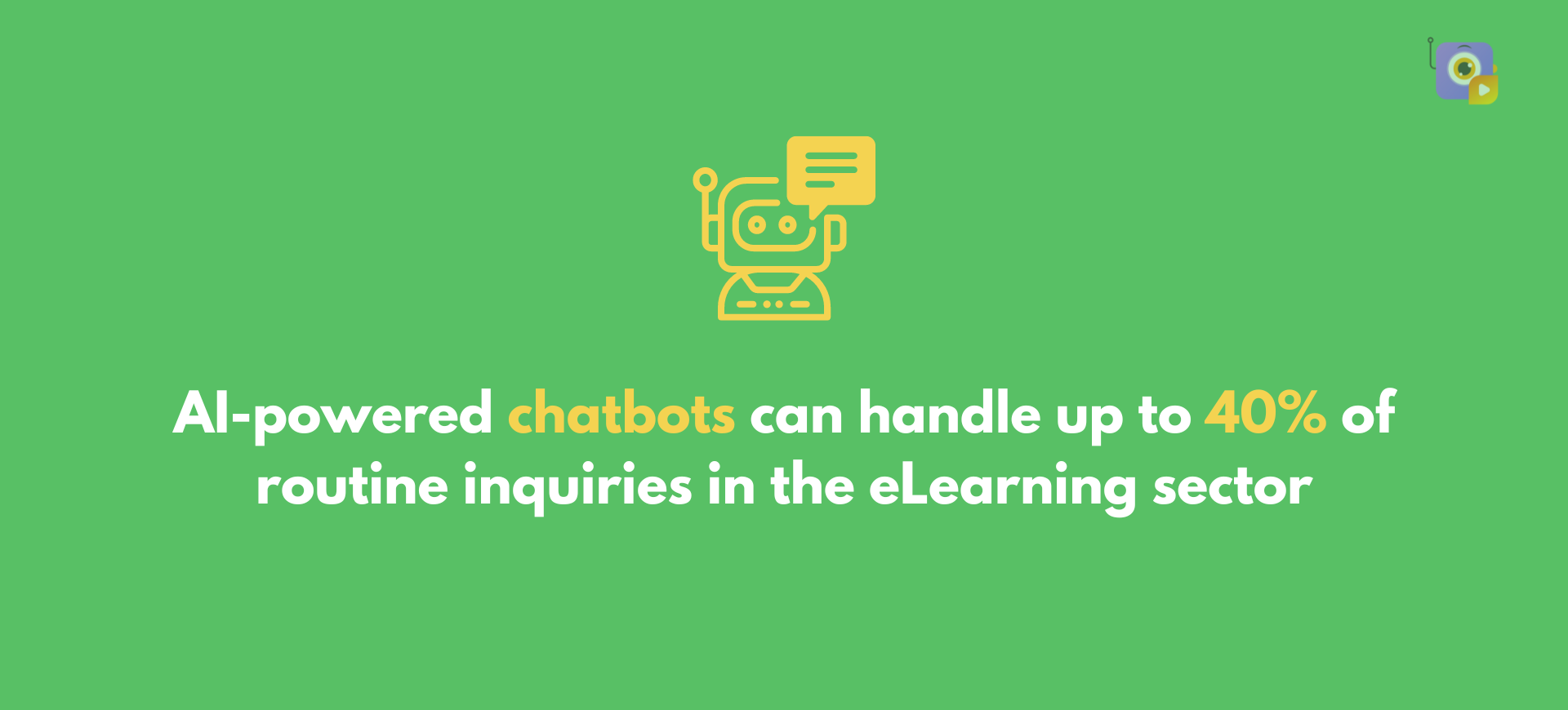
These AI-driven tools mimic human interactions, making eLearning more engaging and accessible.
Additionally, there are talking avatars with AI voiceovers that can further enhance the learning experience by providing a more personalized and interactive approach to content delivery.
One such tool that can create talking avatars in eLearning videos is Vmaker.
 With 100+ AI avatars and 150+ AI voices in various languages, users can choose an avatar, select a voice and language, and provide a script to produce a perfectly synced talking head video.
With 100+ AI avatars and 150+ AI voices in various languages, users can choose an avatar, select a voice and language, and provide a script to produce a perfectly synced talking head video.
This makes it easy to create engaging videos tailored to diverse audiences in just a few clicks.
6. Automated Grading
Besides providing insights on user interaction with the content, AI tools can also automate grading, helping cut down time spent on manual grading.
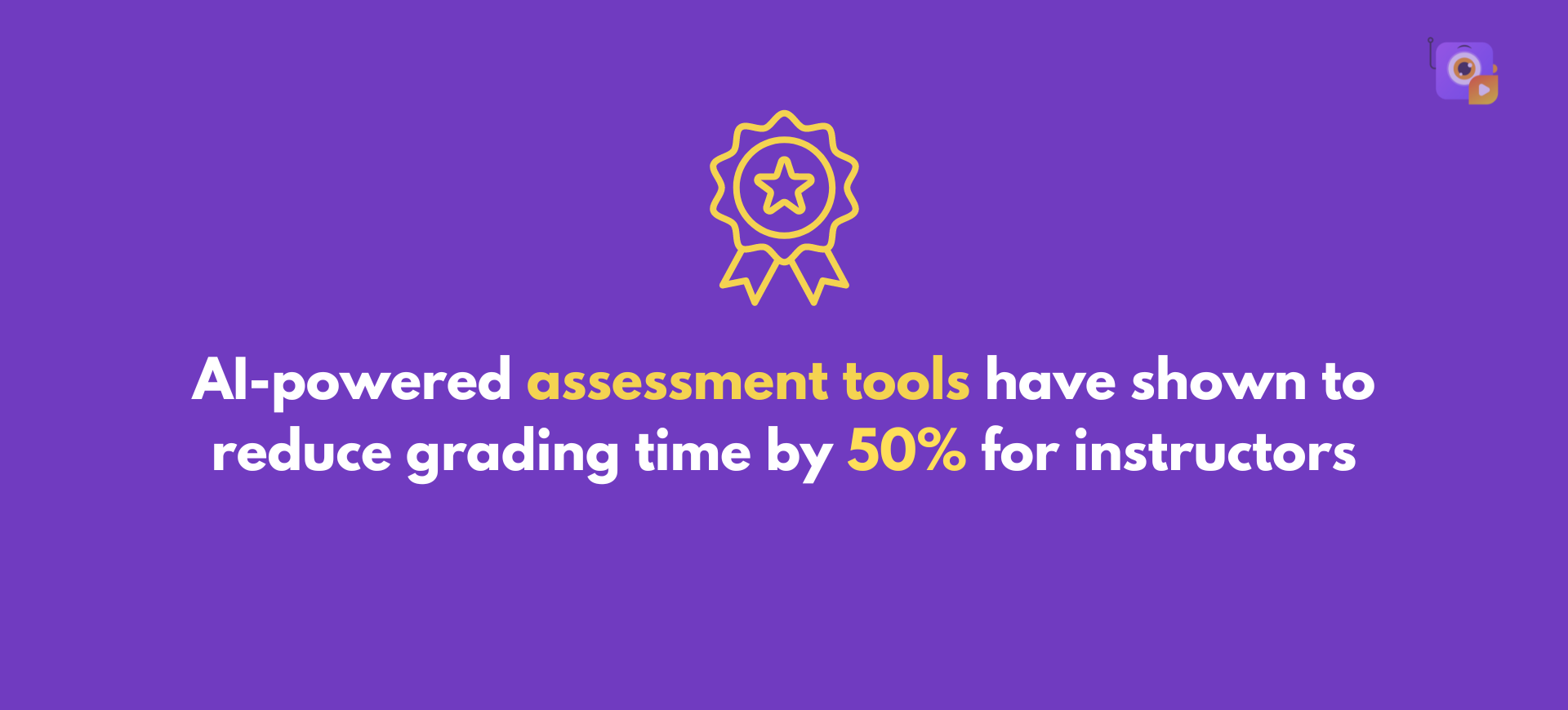
By integrating AI, eLearning is becoming more adaptive, efficient, and learner-centric.
Now that we have seen the role of AI in eLearning, let’s look at a few real-world examples of how a few companies combine eLearning and AI.
Real-life examples of AI in eLearning
Exploring real-life examples of AI in eLearning will demonstrate how AI is designed to enhance our work, not replace it, by creating smarter and more efficient learning experiences.
1. Bank of America
The world-renowned bank has integrated Artificial Intelligence (AI), Virtual Reality (VR), and the metaverse to create immersive and interactive eLearning experiences for its employees.

It has significantly helped employees improve customer service by allowing them to practice and perfect their responses to tough situations in a virtual setting, which they can access right from their mobile devices.
These simulations enable employees to navigate various real-world scenarios, such as effectively calming an angry customer or handling complex financial transactions in a safe and controlled environment.
2. Hilton Hotels
The global hospitality chain partnered with SweetRush to implement AI and VR technology to train its employees in realistic service recovery scenarios.
In each simulation, employees engage with one of three digital guests who present concerns about their stay, challenging them to provide an effective resolution.

This immersive 3D environment allows employees to safely practice handling challenging situations without any risk while enhancing their skills in delivering exceptional service—an essential factor for success in the hospitality industry.
3. Ford
The major American automaker has integrated AI in its employee training for training on products, services, repairs, and sales.

The AI system reviews video clips of employees interacting with customers, providing detailed analysis and constructive feedback.
This approach significantly enhances employees' customer service skills and improves their ability to effectively close more deals.
These real-life examples highlight the impact of AI in eLearning. Next, we’ll explore the specific benefits that AI brings to the eLearning landscape.
Benefits of AI in eLearning
1. Enhanced Learner Engagement and Motivation
By using AI to create personalized animated videos and then enhancing them with interactive elements like buttons and quizzes, you can significantly boost engagement and keep learners actively involved in the learning process.

This stimulating approach helps maintain their interest and encourages continuous learning.
These days, there are many tools that can create animated videos. But only a few generate relevant, high-quality videos. One such AI tool is Animaker AI.

Animaker AI is an AI-powered tool that can generate professional-quality videos within minutes!
The generated video will contain everything that is required to make a video engaging, from animated characters to amazing assets.
What's great is that you can later edit the generated video to tailor it to your organization’s requirements.
- AI features
-
- AI image generator - to generate images and backgrounds.
- AI asset generator - to generate properties and other assets.
- AI voice generator - for adding narration or dialogues with 2000+ AI voices in 200+ languages
- AI subtitle generator - To generate subtitles and translate generated subtitles in 130+ languages
- 150M+ assets
- Character builder to create characters that resemble your team
- One-click Animation!
- 500+ Prebuilt characters from various industries with 1000+ actions and 20 expressions
What more can one need?!
2. Improved Learning Outcomes
AI's ability to analyze content and understand employee engagement patterns helps organizations to continually enhance their training materials.

This continuous improvement process helps create more effective learning experiences. With consistently engaging materials, learners are more likely to stay motivated, achieve their goals, and improve their performance at work.
3. Time and Cost Efficiency
The automated nature of AI, such as grading and content creation, reduces the time and resources required to manage eLearning, allowing instructors to focus more on enhancing the overall learning experience.

This efficiency allows organizations to create high-quality learning materials effectively at a lower cost compared to traditional eLearning methods.
4. Scalability of Training Programs
From generating content to managing extensive data sets, AI enables organizations to scale their training programs effectively, accommodating large numbers of learners without compromising quality or increasing resource demands.
This capability is especially valuable for global organizations with varied training needs, as AI ensures consistent and efficient training delivery across diverse regions and teams.
5. Higher Retention and Reduced Dropout Rates
When eLearning material is relevant and manageable, learners are more likely to stay committed and complete their training.

The engaging and interactive nature of AI-generated content ensures that learners find the material rewarding and worth their time. This ultimately leads to lower drop-out rates and higher retention levels.
These are the significant benefits of AI in eLearning. However, to fully understand its potential, it's important to also explore the challenges associated with AI in eLearning.
Challenges of AI in eLearning
While AI offers great benefits for eLearning, it also presents several challenges that need to be carefully considered to ensure its effective and ethical integration:
1. Data Privacy and Security Concerns
AI systems rely heavily on vast amounts of data gathered through web scraping techniques and other collection methods, including sensitive personal information about learners.
Incidents like unauthorized access or data breaches can lead to serious consequences, like identity theft or misuse of personal information, raising concerns about data protection and privacy.
2. Lack of Human Touch and Emotional Intelligence
While AI can provide personalized and adaptive learning experiences, it lacks the emotional intelligence and empathy that humans bring.
This can sometimes make the learning experience feel detached and may not fully address learners’ emotional needs, which is crucial for effective learning.
3. Continuous Maintenance and Upgradation
AI systems need regular updates, maintenance, and monitoring to remain effective and secure. This involves recurring costs and technical expertise, which can be burdensome for organizations.
If AI tools aren’t kept up-to-date, they can become less effective, deliver outdated content, or even have security risks.
4. Ethical Concerns
The use of AI in any field often raises ethical concerns, and eLearning is no exception.
Issues like potential misuse of data and a lack of transparency in its decision-making processes can impact the trustworthiness of AI in eLearning.
To tackle these challenges, it is important to approach AI in eLearning carefully while balancing innovation with ethical considerations, data security, and inclusivity.
This means educating everyone involved about the potential risks and benefits of AI and ensuring transparency in how decisions are made.
***
I’m sure you now know how eLearning and AI can be combined to create the best possible eLearning experiences for employees while also keeping in mind their challenges.
As organizations embrace AI, they unlock new possibilities for creating engaging and effective learning materials that drive better performance and outcomes. With eLearning authoring tools that use AI, it’s possible to design content that is not only informative but also immersive and interactive, capturing learners' attention and enhancing retention rates.
There are great AI tools offering help with everything from video creation to streamlined distribution.
For those looking to elevate their eLearning content with innovative and visually captivating videos, Animaker AI stands out as a powerful choice.
Check out Animaker AI to see how it can transform your eLearning, or click on the banner below to connect with our experts to create professional-quality videos for your organization.
